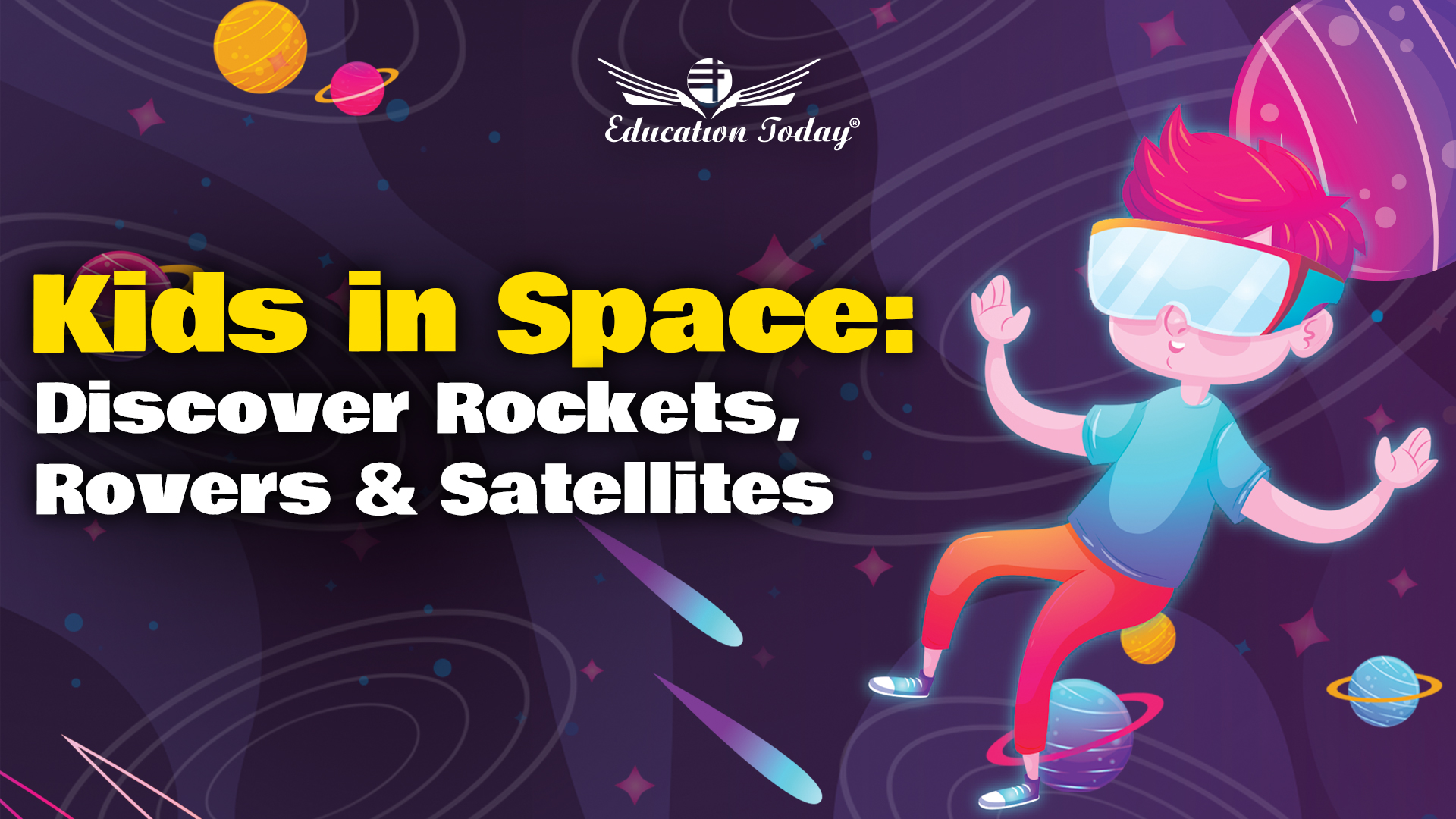Space Tech for Kids: Discover Satellites, Rovers & Rockets that Spark STEM Learning & Exploration
Have you ever looked up at the night sky and wondered what’s out there? Stars may sparkle like diamonds, but beyond them lies a world full of space technology for kids, exploration, and discovery. Space exploration for children is not just for astronauts and aliens—it’s also a playground for science, filled with incredible machines that help us understand the universe and improve life on Earth. Welcome to the fascinating world of space tech for kids.
From powerful rockets to clever satellites for kids and tireless rovers for students, modern space tech for students is full of wonder. Let’s launch into the exciting stories of how these machines work, what they do, and how they shape the future of STEM space education and space science for kids.
Satellites: Our Eyes and Ears in Orbit
Imagine a giant metallic soccer ball zooming around the Earth, carrying cameras, sensors, and antennas. That’s a satellite—one of the most important pieces of space technology for kids and a core part of educational space tools for students in our daily lives. Satellites orbit Earth thanks to a perfect balance: their forward speed keeps them from falling, while Earth’s gravity keeps pulling them inward. The result? They circle the planet again and again in a kind of space ballet.
Educational space tools like satellites come in many shapes and sizes, and they do all kinds of useful jobs. Weather satellites take photos of clouds and storms to help us predict the weather. Communication satellites help send phone calls, TV broadcasts, and even internet data across the globe. Navigation satellites, like those in the GPS, help people find their way, whether they’re driving across town or flying across the ocean.
Some satellites help scientists study the Earth—tracking forest growth, monitoring ocean temperatures, and even measuring air pollution. The next time you use a map on your phone or watch a weather report, there’s a good chance a satellite made it possible. These are just some of the ways space learning for kids becomes part of everyday life.
Rovers: Robotic Explorers of Alien Worlds
Now, imagine sending a robot car to another planet. That’s exactly what scientists do with space rovers for kids. These machines are like remote-control cars on steroids—tough, bright, and equipped with cameras, sensors, drills, and sometimes even lasers.
Educational space activities often center around these amazing robotic explorers. Rovers are designed to explore places where humans can’t go yet. They crawl across rocky terrain, climb dusty hills, and explore alien environments, all while sending back information to Earth. The famous Mars rovers for students—like Curiosity and Perseverance—have been studying the Red Planet for years. Perseverance even brought along a flying partner named Ingenuity, a tiny helicopter that made the first-ever flights on another planet.
These robots are controlled by teams on Earth who send instructions across millions of miles. Thanks to them, we’ve learned about Mars’ ancient rivers, discovered strange rock formations, and found hints that life might once have existed on other worlds. It's all part of interactive space learning and inspiring space careers for kids.
Rockets: The Giant Leaps That Take Us There
To get satellites and rovers into space, we need some serious power. That’s where rockets for kids come in. Rockets are tall, fuel-packed machines that generate massive thrust by burning fuel and pushing hot gases out of their engines. This force is strong enough to overcome Earth’s gravity and send machines—and sometimes people—soaring into orbit.
Most rockets have more than one stage. After a stage uses up its fuel, it detaches and falls away, making the rest of the missile lighter and faster. The final stage carries the satellite or rover the rest of the way into space.
In the past, rockets were used only once and then discarded. But today, thanks to modern space engineering for kids, some missiles can land back on Earth and be used again. This makes space travel cheaper, safer, and more sustainable than ever before. This is also a great topic for simple rocket science for children and hands-on space experiments for kids in STEM classes.
A Journey Through Time: How Space Tech Evolved
The journey into space began in 1957 with the launch of Sputnik 1, the first artificial satellite, by the Soviet Union. It was small and straightforward, but it started the Space Age. Just over a decade later, humans walked on the Moon.
Since then, STEM space education for kids has become a key part of classrooms and learning programs. Satellites have become more advanced, rockets more powerful, and rovers more intelligent. We now have the International Space Station orbiting Earth as a home and laboratory in space. Telescopes like the James Webb Space Telescope are peering deeper into the universe than ever before.
Today’s space innovations for students are not just about reaching new places—it’s about learning, sharing, and building a better future. These advancements support space tech explained for students in fun and approachable ways.
How Space Tech Affects Life on Earth
It might surprise you to learn how much space-based technology for kids is part of your everyday life. Here are just a few examples:
- Over 7,500 active satellites orbit Earth as of 2024, helping us communicate, navigate, and learn.
- GPS systems powered by satellites guide cars, planes, ships, and smartphones across the globe.
- Weather satellites track storms and natural disasters, helping save lives and property.
- Space tech in agriculture for students helps farmers grow more food using satellite data about soil and climate.
Even though space seems far away, the technology kids use in daily life to explore it is working for us every day, right here on Earth. These are truly fun space facts for children that highlight how space benefits us all.
The Future of Space: What’s Next?
Space careers for kids may not be as far off as they seem. Space technology for kids is only getting more exciting. Here are some trends and innovations that could shape the future:
- Commercial space companies are building rockets and preparing for space tourism.
- Mini-satellites called CubeSats are making space more affordable and accessible.
- Missions are being planned to explore asteroids, return to the Moon, and send humans to Mars.
- Space-based internet systems are aiming to connect even the most remote areas of the planet.
- New efforts are focused on cleaner rocket fuels and reducing space junk to keep space safe and sustainable.
The future of space education for young learners isn’t just happening in labs and control rooms—it’s being shaped by young minds full of curiosity and creativity. That’s why space STEM projects for kids are becoming more important than ever.
Conclusion: The Sky is Not the Limit
Space exploration for children is one of the most exciting frontiers of science. From satellites for kids that help us navigate and communicate, to rovers and rockets for students that explore distant planets, space tech for kids is opening doors to discoveries we once only imagined.
So the next time you look up at the stars, remember: space isn't just far away—it's part of our world, and your journey into it might start today. Whether you dream of becoming an astronaut, an engineer, or a scientist, the adventure is only beginning.
Keep asking questions. Keep exploring. The universe is waiting.






